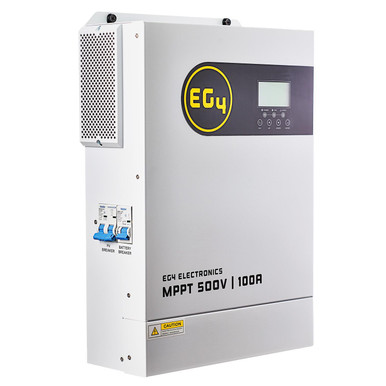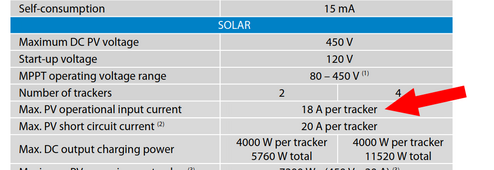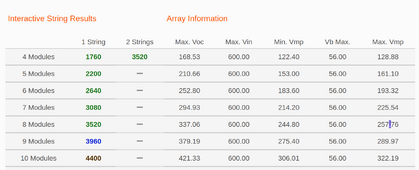ddxv
New Member
I'm looking for a new charge controller that can handle max VOC > 470V. So far I've found these two models, but they have a very different set of prices, so I'm not sure if I'm missing something that the Morningstar has that the EG4 does not.
$989 - 600V - Morningstar Tristar DB TR GFPD
Comes with a GFPD, which oddly in both the Amazon and ebay shop is MORE expensive to get the model without it, possibly because the GFPD version is quite large? Morningstar also comes with disconnect box as well.
My only issue with this is it's physical size (it's 35" tall) and the semi sketchiness of this Amazon/ebay seller instead of a specific site. Looking around on sites it appears to be $300 more there.
A link to amazon:
$399 - 500V - EG4
Why does this say 22A max PV input? Is that really the max I can send? I was hoping to send 250v 40 amps from my PV array, but the 22A seemed low enough I wasn't sure if this is the right MPPT for me.

 signaturesolar.com
signaturesolar.com
Any other MPPT recommendations that fit for higher voltage?
$989 - 600V - Morningstar Tristar DB TR GFPD
Comes with a GFPD, which oddly in both the Amazon and ebay shop is MORE expensive to get the model without it, possibly because the GFPD version is quite large? Morningstar also comes with disconnect box as well.
My only issue with this is it's physical size (it's 35" tall) and the semi sketchiness of this Amazon/ebay seller instead of a specific site. Looking around on sites it appears to be $300 more there.
A link to amazon:
$399 - 500V - EG4
Why does this say 22A max PV input? Is that really the max I can send? I was hoping to send 250v 40 amps from my PV array, but the 22A seemed low enough I wasn't sure if this is the right MPPT for me.

EG4 Solar Charge Controller MPPT | 500VDC 100A | MPPT100-48HV
Signature Solar provides solar panels, off-grid solar systems, grid-tie, and hybrid systems. Quality solar inverters, bifacial solar panels, complete solar kits, solar batteries. Featuring brands such as EG4 Electronics with their solar battery, LifePower4 and EG4 LLifePower4 and EG4 LL
 signaturesolar.com
signaturesolar.com
Any other MPPT recommendations that fit for higher voltage?






